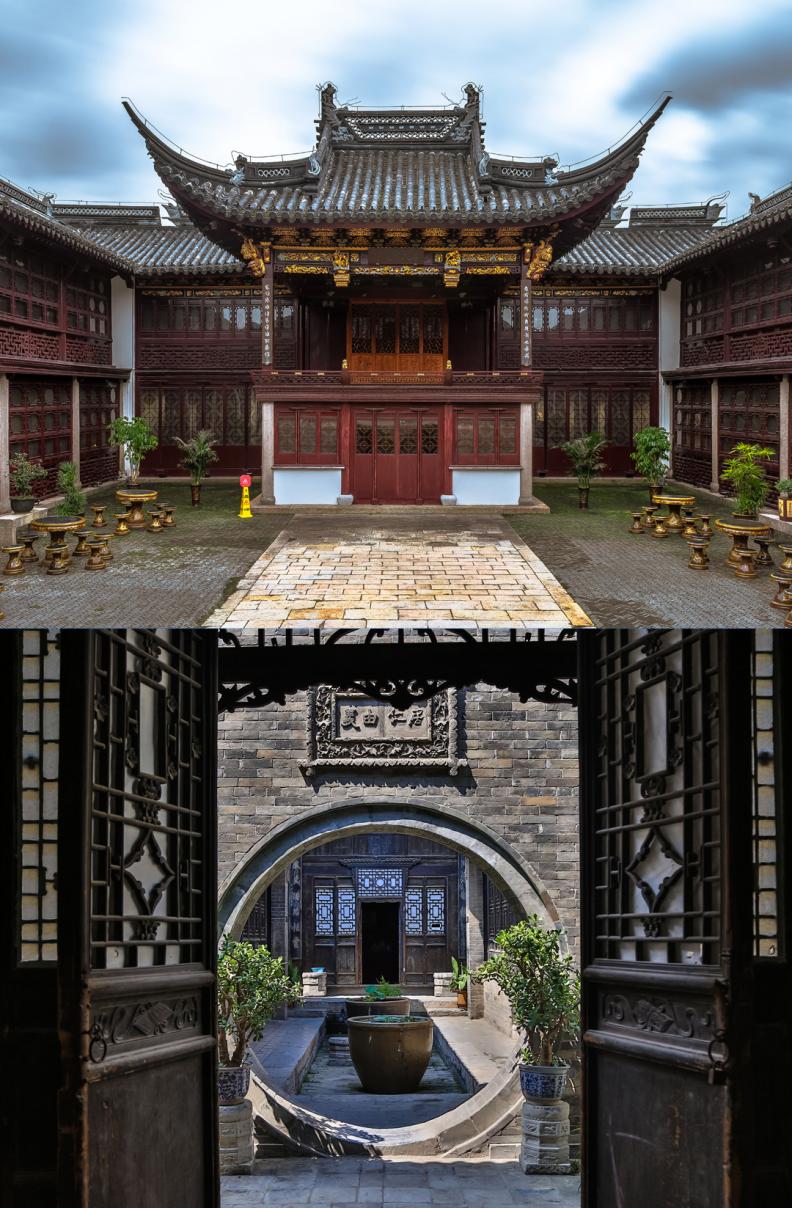
所谓对称,是指以某一个点或一条线为中心,两边的形状、大小呈现对称的现象。无论是颜色、影调还是结构,都是统一和谐的。
Symmetry refers to a phenomenon where shapes and sizes on both sides present a symmetrical appearance, with a center point or line. Whether in terms of color, tone, or structure, symmetry embodies unity and harmony.

在建筑、艺术、设计等领域,对称美是一种常见的设计手法,同时,对称也体现了中国古代哲学中的“天人合一”思想。在中国古代建筑中,对称美学被广泛应用,并成为固有的审美特征,使整个构筑物达到了统一、和谐、平衡的效果,释放出稳重而端庄的感觉。
In the fields of architecture, art, design, and more, symmetrical beauty is a common design technique. Simultaneously, symmetry reflects the ancient Chinese philosophical concept of "harmony between heaven and man". In ancient Chinese architecture, the aesthetic of symmetry is widely applied, becoming an inherent aesthetic feature. This application brings about a unified, harmonious, and balanced effect, exuding a sense of stability and dignity.

梁思成曾经说过:“再没有一个民族对中轴对称线如此钟爱与恪守。”在中国的庙宇、宫殿、亭台楼阁、园林和小院等传统建筑中,对称原则得到了广泛的应用。可以说,中国传统建筑将对称美学运用到了极致。
Architect Liang Sicheng once remarked, "No other nation is so devoted to and adheres to the central axis symmetry as much as the Chinese." In traditional Chinese buildings like temples, palaces, pavilions, gardens, and courtyards, the principle of symmetry is extensively employed. It can be said that traditional Chinese architecture has taken the application of symmetry aesthetics to the extreme.
责编:勾晓庆
